It seems like some sort of escapee from the “crazy engine swaps” corner of YouTube, yet this Mini Cooper—with a Buick V-8 mounted in its trunk driving the front wheels—was considered a serious racing contender in the ’60s, at the height of Mini mania.
But when things didn’t go to plan, the wild Mini’s days of tire-shredding came to an end and it was effectively abandoned in a lockup for three decades.
Now the son of one of the creators of the Cooper-Buick Mini has tracked it down and taken on custodianship of the outlandish machine. Hagerty caught up with the story of the most unruly of Minis …
Brian Redman: “It’s dreadful!”
Having tested the Cooper-Buick at Aintree, sports-car racing legend Brian Redman described the handling as “dreadful.” He may have had a point. Later, on its first road run, it veered left unexpectedly on a gear change, crossing the road, demolishing a bus shelter, and ending up in a garden.
At the wheel this time was the late Harry Ratcliffe, a big name in Mini circles, who was rarely photographed without a pipe in his hand. There’s no word on whether he was smoking at the time of the incident, but he probably required a stiff drink after the event. Some would surely argue that, before considering a drive in a Mini with a 3.5-liter Buick V-8 in the back, you’d need to be under the influence of something.
It was one of the craziest creations to emerge from the Mini’s craziest era. “Possibly the quickest Mini in the world” is how Autosport’s Allan Staniforth described the Cooper-Buick in 1964, pointing to the engine’s 153 hp at 4400 rpm and the fact that the first runs around Oulton Park (a 2.7-mile track in Cheshire, England) were “easily accomplished in top gear.” Changing gear was risky in the mega-Mini, although at least there were no bus shelters lining the track at Oulton.
Ratcliffe, who built the car with long-time friend and business associate Jeff Goodliff, once described driving the car at speed as “like trying to throw a sledgehammer shaft-first.” The precise quote has been lost in the sands of time—Ratcliffe and Goodliff passed away in 2016—but it’s a wonderful description of a Mini with a huge slice of Detroit iron in the trunk.
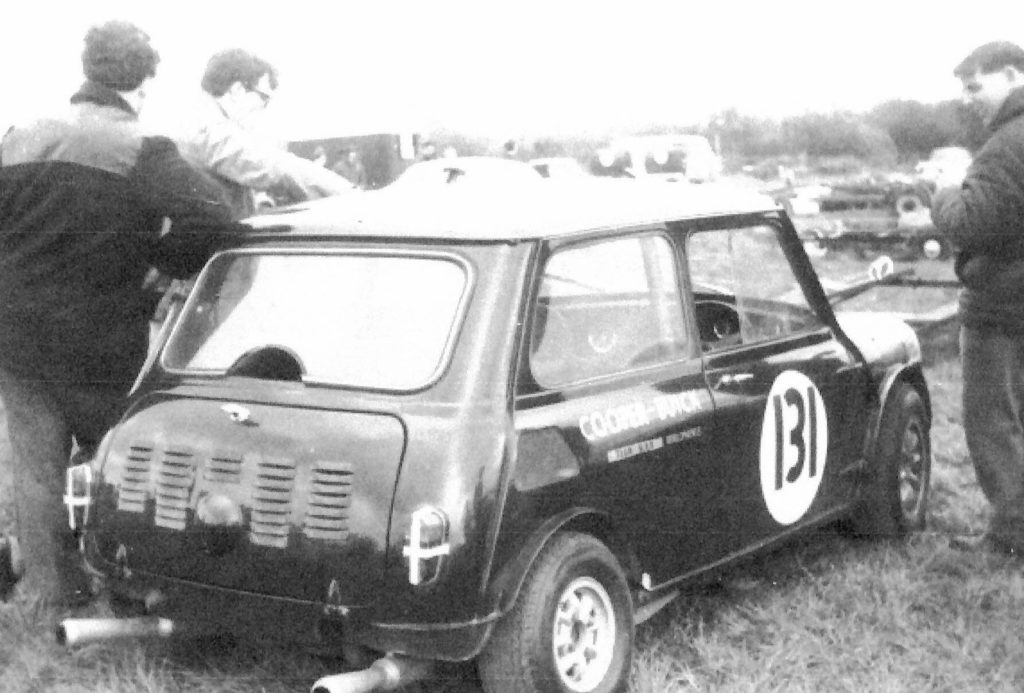
If we stand here, nobody will notice what’s in the back. Photo: Simon Goodliff
On the plus side, the Buick V-8, supplied by Redman for £100, was lighter and more entertaining than a pair of back-seat passengers, with weight distribution tackled by the six-gallon fuel tank, radiator, battery, and final drive unit at the front. Redman also supplied the Jaguar E-Type four-speed gearbox and differential that completed the driveline.
Visually, it differed little from other, 1071cc Cooper S cars, with wider arches to house the 13-inch wheels at the front, some venting and a slight bulge in the boot lid, along with twin exhausts, wonderfully described by Autosport as “twin megaphones.”
Why the Cooper-Buick Mini was built
It would be easy to dismiss the car as a folly, little more than a publicity stunt for BRT Developments and the sponsors Vitafoam Ltd. It was anything but. Ratcliffe and Goodliff saw it as a way to exploit a change in regulations, a shift that essentially released the shackles for Britain’s race teams. Saloon-car racing’s equivalent of Group B, if you like, with the same short-lived window of opportunity. By the time the Cooper-Buick was ready to race, the regulations had changed again.
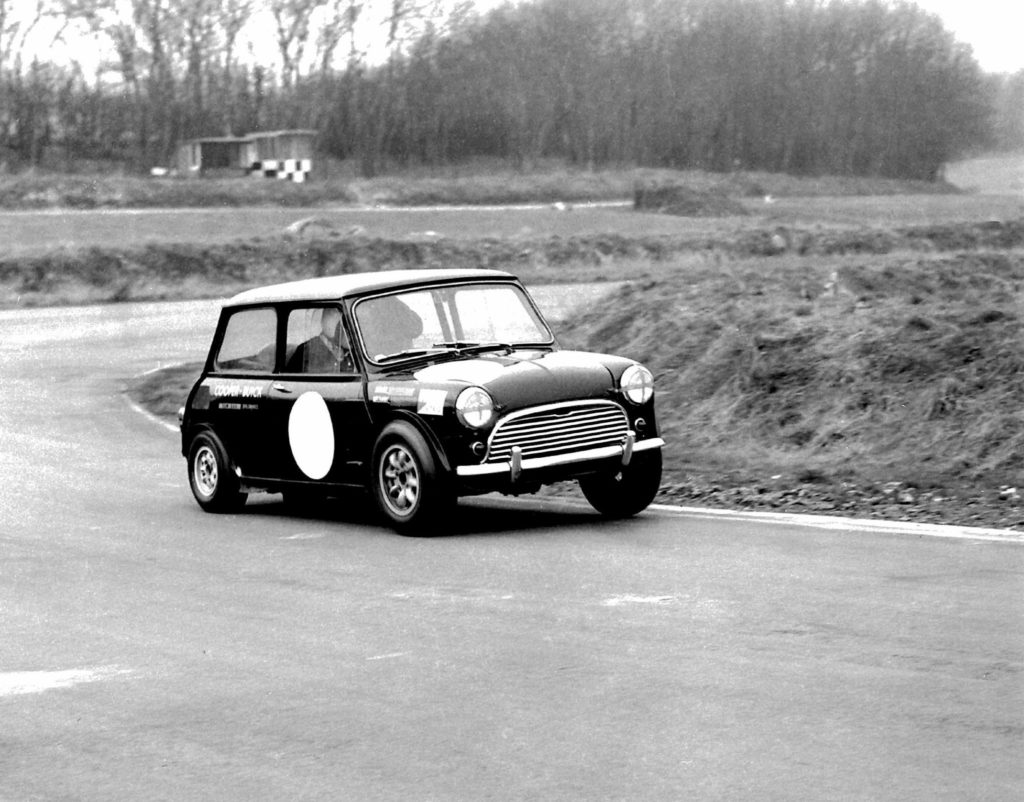
No smoke, no mirrors. Photo: Simon Goodliff
But not before the car had secured a chapter in the history of mad Minis. Following its first outing at Oulton Park, the Cooper-Buick raced at Mallory Park on Boxing Day 1964 and later at Silverstone and Castle Combe. Ratcliffe described it as “the best and worst thing” that he ever did, pointing to the publicity it generated as one of the positives.
“It was front-wheel drive, which is why it oversteered so nicely because all the weight was in the back,” he said. “In a race you had a chance of being well up the field because nobody could get past, due to the car skating about all over the place.”
That, combined with the smoke—from the tires, not Ratcliffe’s pipe—would have made it a formidable obstacle for fellow racers. “By the time the season opens I think we shall have sorted out the roadholding,” said an optimistic Ratcliffe in 1964. “I hope it will prove some real opposition in saloon car events.”
It wasn’t to be. The Cooper-Buick was too much of an animal to be driven in anger, such was the car’s notoriety for lift-off oversteer. A standard Cooper S could lap a circuit in a faster time, albeit without the tire smoke and soundtrack. Theater and a fast lap time rarely go together, so following the participation in a few hillclimb events, the car was retired.

Simon Goodliff
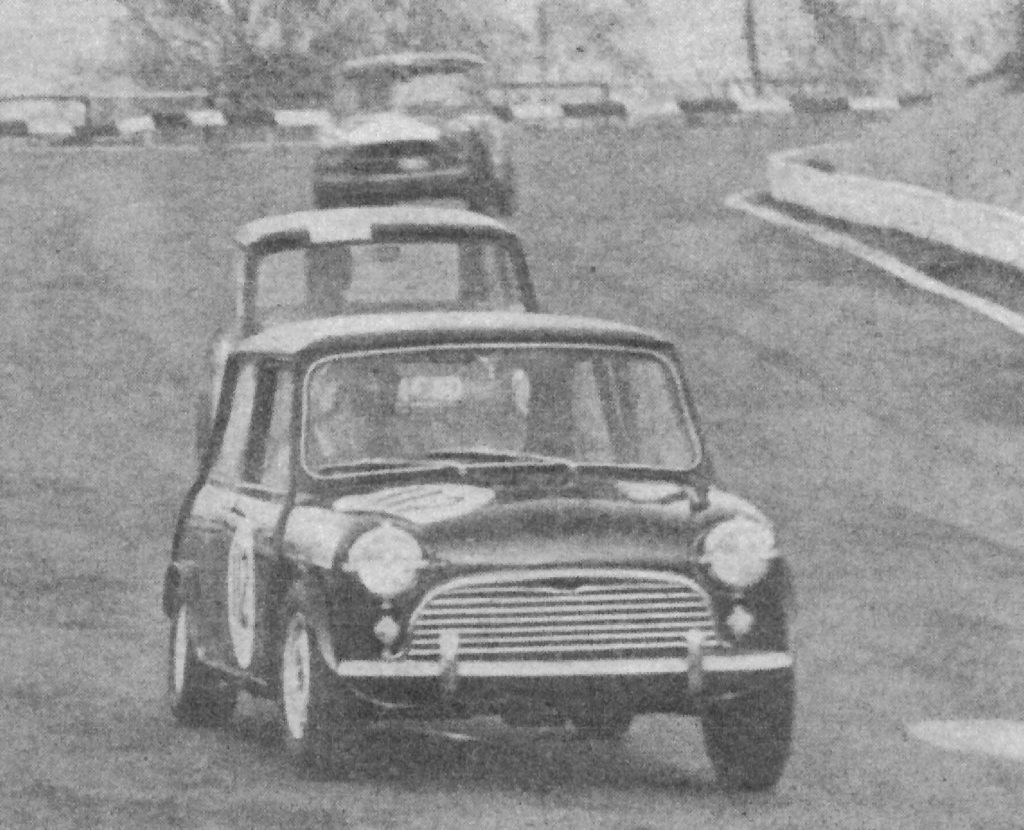
Simon Goodliff
For three decades, the car lived under the railway arches in London. Its retirement history is sketchy, but Gerry Marshall reportedly owned the car for a decade before it ended up in Wales. It was from here that it was extracted by JD Classics, who listed it as a “period British competition car.”
Keeping it in the family
A little research shows that the car was first advertised for sale in 2014 and purchased by former racer Jonathan Buncombe, who was keen to preserve the legacy of one of the most famous modified Minis of the 1960s. Today, after a faithful restoration by Buncombe and Richard Walters of Nippycars, the Cooper-Buick is almost complete.
It’s also in the hands of a new owner, Simon Goodliff, the son of the car’s creator, who is understandably emotional about the purchase. He told us: “My aspiration was to collect the cars my father and Harry raced in period. I’ve got the Morris Minor [PDK 495] that Harry originally raced and there are others still out there.
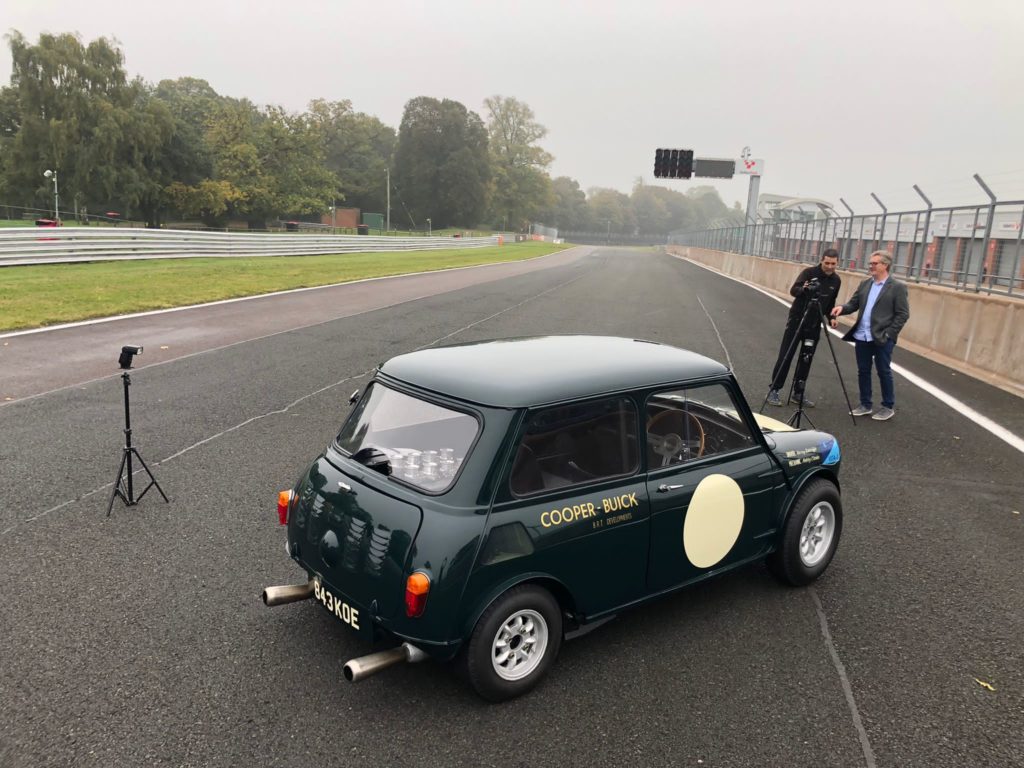
Cooper-Buick, not parked in a garden. Photo: Simon Goodliff
“I never joined the dots that there could be an opportunity for me to own this car. Jonathan found creative ways for me to own it, having realized that he is of an age that means he won’t be doing anything with it. He felt strongly that it should return to the family and wants me to actively campaign it.”
Goodliff says he is indebted to Buncombe’s generosity, saying: “He’s a gentleman who wants to preserve its legacy. He outbid other potential buyers who were keen to return it to factory spec.”
The Cooper-Buick began life as Reverend Rupert Jones’ Fiesta Yellow 1071 Cooper S, before morphing into multiple Vita D cars. Prior to the V-8 conversion, the car raced at the 1964 Targa Florio, with Motor Sport reporting that “the Mini of Rupert Jones and Harry Ratcliffe had a front wheel fall off, so that the car skated along its suspension and damaged itself.” Skating wasn’t the preserve of the V8 Mini …
- JD Classics
- JD Classics
- JD Classics
Photos from when it was for sale at JD Classics show a car in remarkably good condition. Goodliff says: “For reliability and other reasons, the car now features a 4.5-liter V-8, but the rest is original. Very little of the sheetmetal was rotten—the running gear and chassis components are all original.
“It’s got new front 13-inch front wheels because the original Minilites were missing. Right now, it’s producing 345 hp, but we won’t be using all of it!”
One thing it must do is go in a straight line, which could be easier said than done. “It has so much torque, not helped by the unequal length driveshafts. I reckon it needs a month of fettling before it’s ready for racing. The plan is to campaign it at Shelsley Walsh and Harewood, and I’d love to get it to next year’s [Goodwood] Festival of Speed to celebrate the lives of Harry and Jeff. I’ll have a giggle with it.”
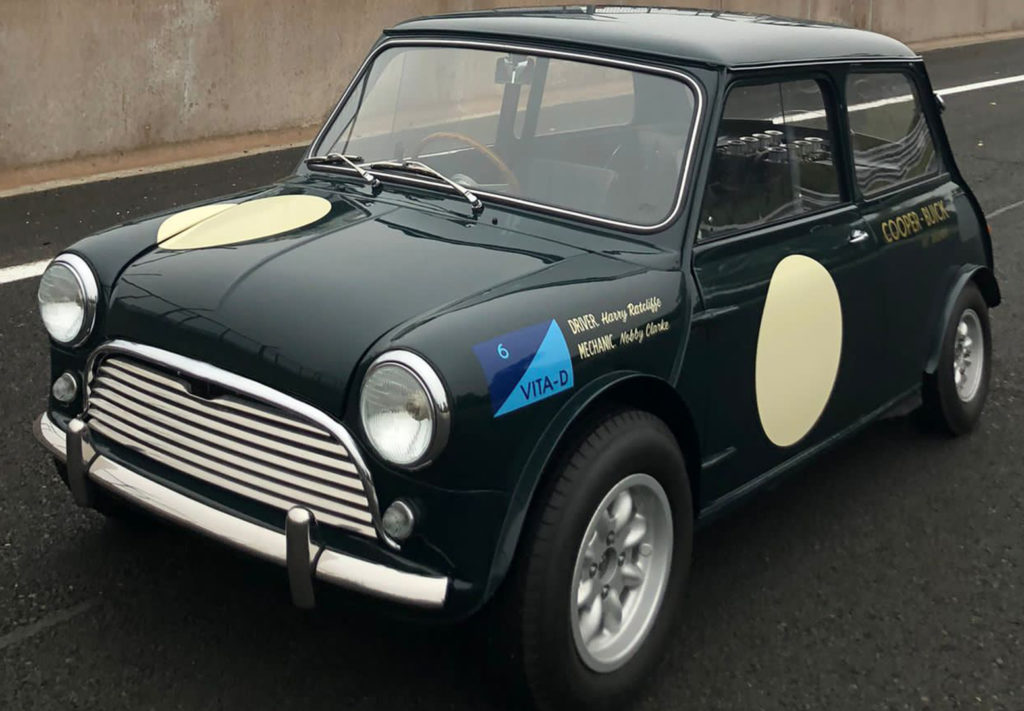
Nutty and obnoxious. Photo: Simon Goodliff
Goodliff collected the car from Somerset, before trailering it home via Oulton Park for some authentic photos. Of all the cars his father raced, he describes the Cooper-Buick as “the most nuts,” labeling the soundtrack as “obnoxious.” The plan is to register it for the road, although bus shelters will be given a wide berth.
“My utopia is to own PDK 495, the Buick, and the British Vita Racing Minisprint,” he says. The Vita-Min is one of the most famous Minis of the era, boasting 177 bhp at the flywheel and 118 hp at the wheels. It dominated the 1969 BARC Castrol Hillclimb Championship, with Jeff Goodliff winning every round. Goodliff was a three-time winner, having won in 1968 in a different Mini, and again in 1970, this time in a Lotus Elan.
The Vita-Min lives in France but returned to the U.K. in 2013 for the Cooper S 50th anniversary celebrations at Shelsley Walsh. Convincing the French owner to part with the car might be difficult, but Simon Goodliff intends to create a copy of Rupert Jones’ Targa Florio car—after enjoying life with the V-8 monster.
One thing’s for sure, the car is in safe hands. We’re looking forward to seeing it at an event or two in 2023. Spectators should form an orderly queue, though perhaps not at a bus shelter …
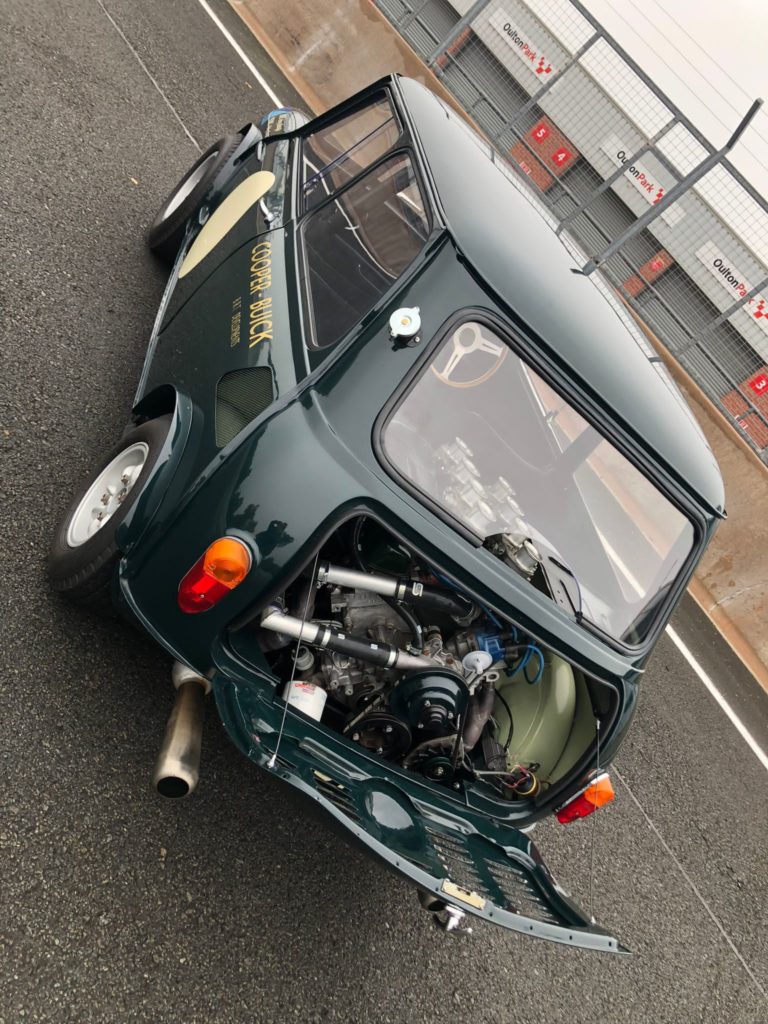
Does my engine look big in this? Photo: Simon Goodliff

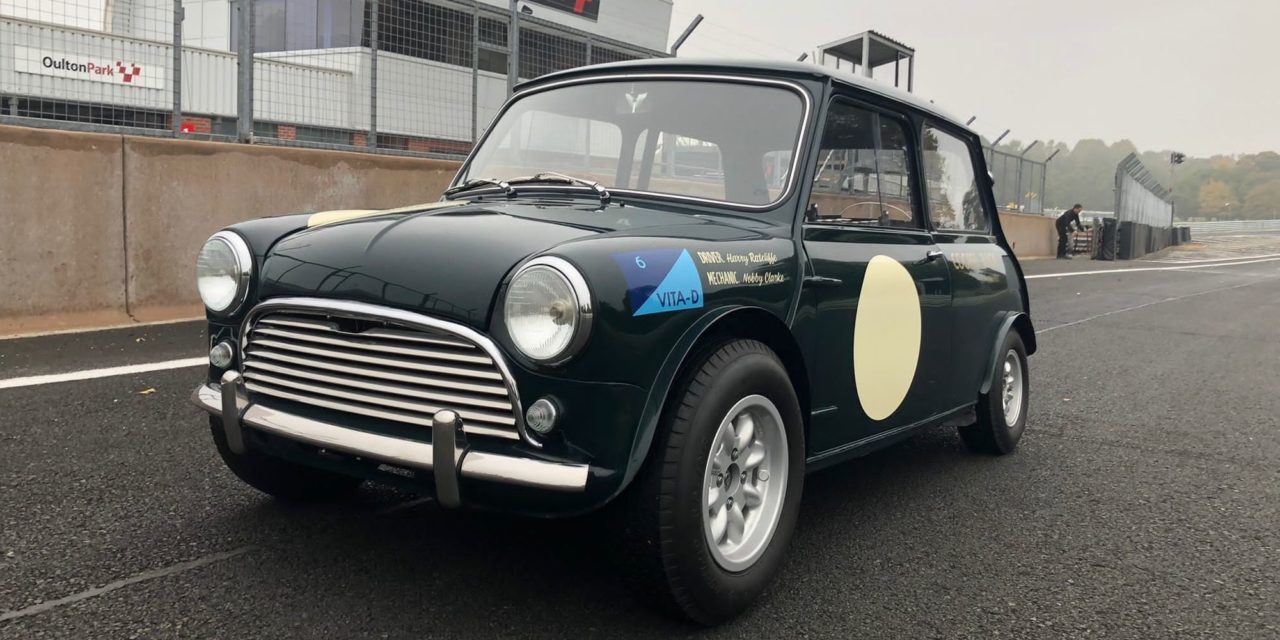
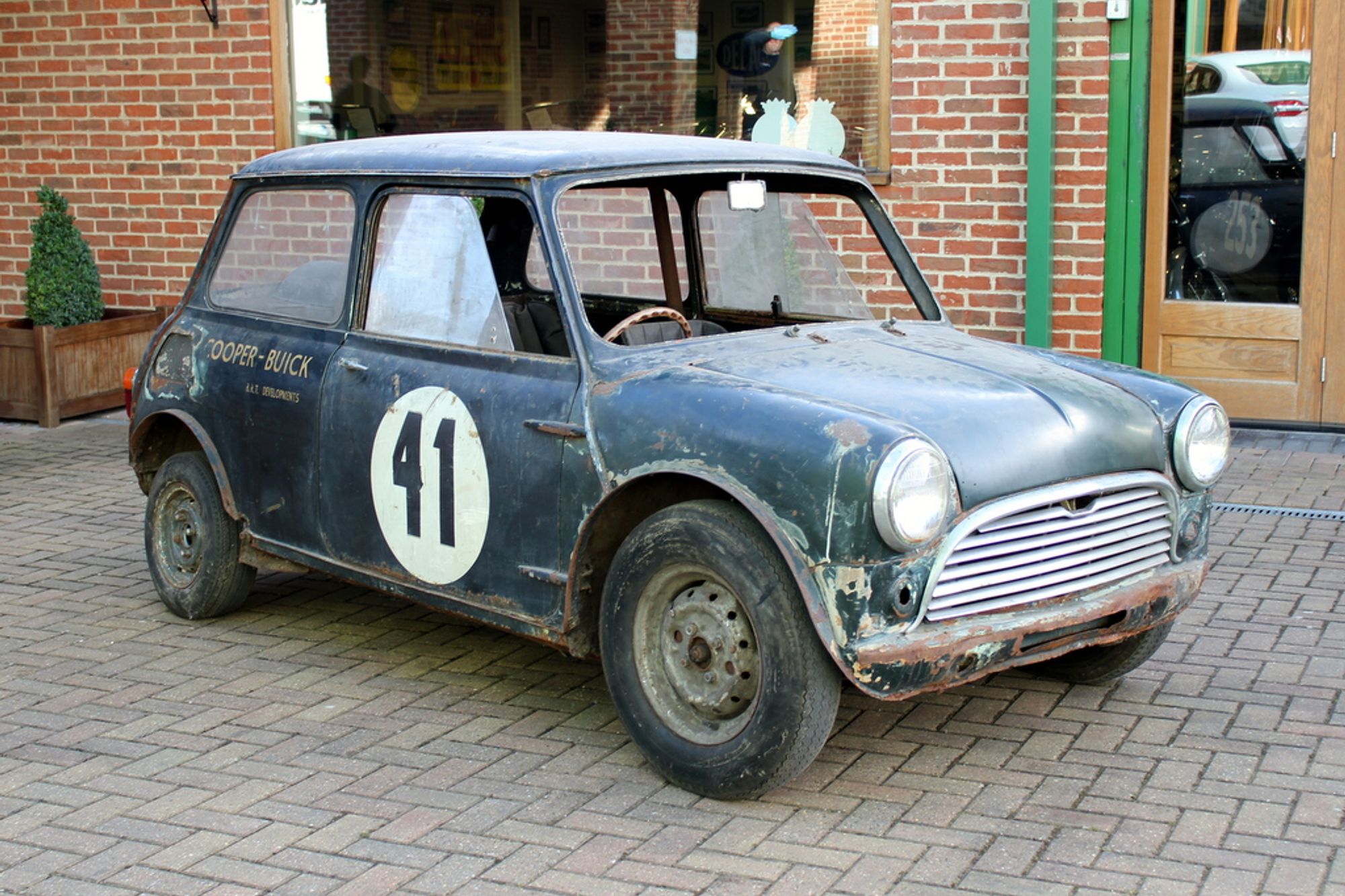
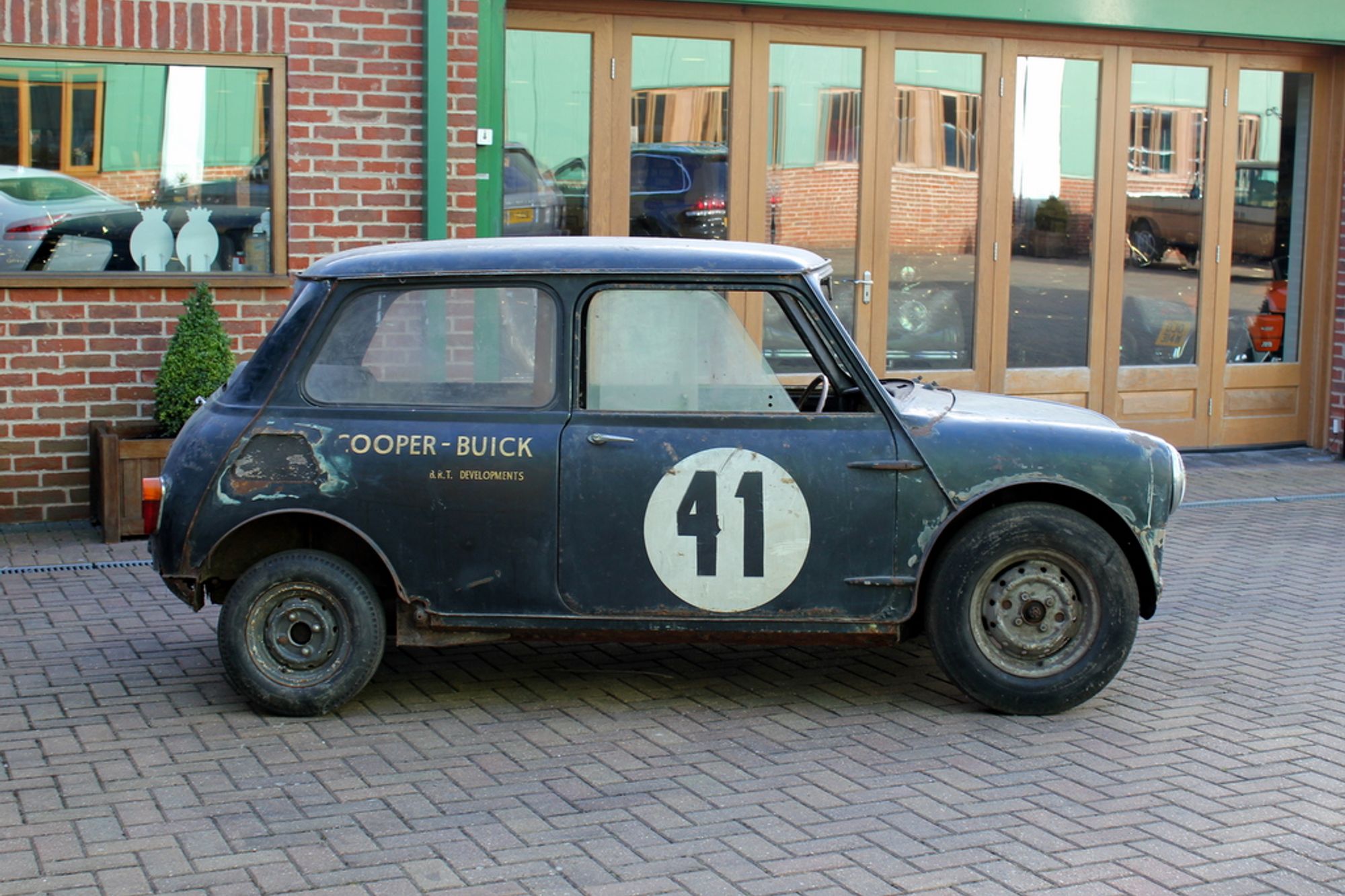

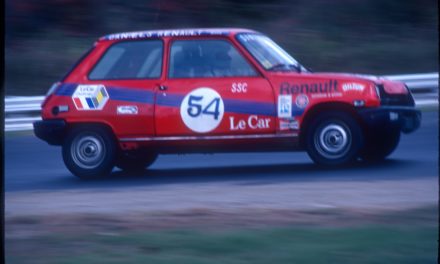
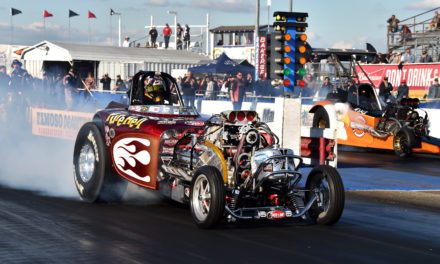
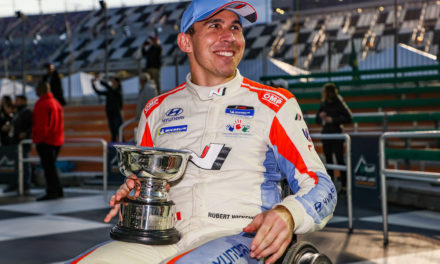





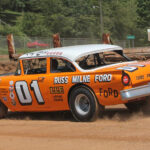
A friend of mine had a 62 Corvair some years back that he shoehorned a full300 horse 327 into. It was midship and was bolted to the original Corvair gearbox………it was fast…..and believe it or not it handled well …..if you know how to drive with the throttle. He absolutely blew away a Porsche 911 turbo but never got it into a sanctioned race at Road Atlanta…..what a beast that would have been. Of course he sold the car to someone out west and hasn’t been heard from since…….what a shame…..